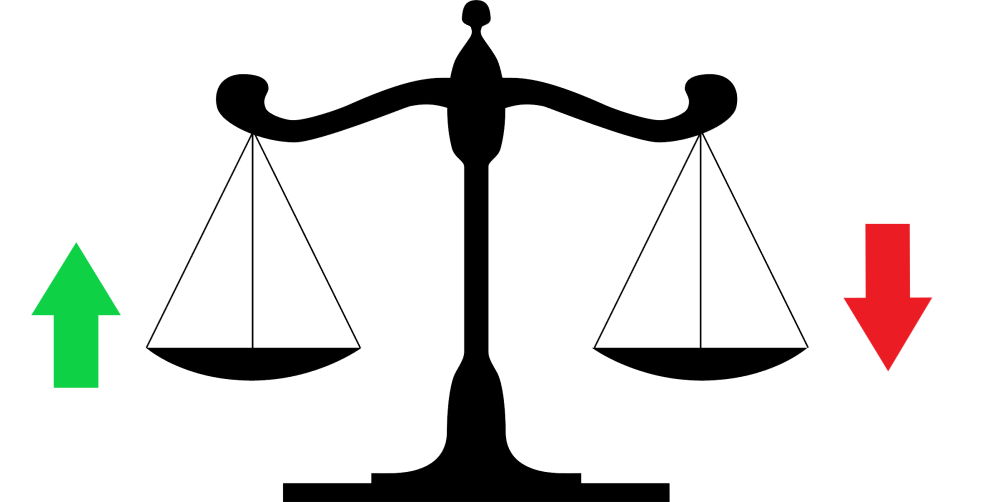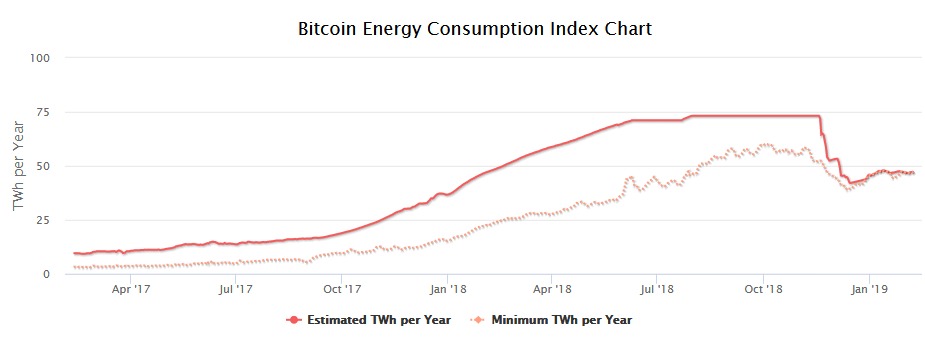Latest news about Bitcoin and all cryptocurrencies. Your daily crypto news habit.
 Find out more at www.aXpire.io
Find out more at www.aXpire.io
Only a short amount of time has passed since 2019 started, but we’ve already had the chance to observe how some of the most important blockchain trends will reshape the space over the next year.
2019 could go down in blockchain history as the ‘versus’ year, and the ‘fight card’ is certainly interesting. With this article, we’re taking a look at a few of the hot button topics that are being discussed. Some of them include:
- One blockchain to rule them all vs. a combination of blockchains with different characteristics.
- PoW (Proof of Work) vs. PoS (Proof of Stake).
- Scalabilty & speed vs. decentralization.
- STOs vs ICOs.
- Bakkt & derivatives for cryptocurrencies vs. anti-institutional sentiment.
It is typical for young industries that are steaming ahead with development to have a wide range of options in their roadmap. These are signs that the environment is active and forward-looking, and that, one way or another, it will self-adjust and find its standards for best practices and methods of work.
You can think of it as a maze, with every possible path represented by a potentiality; a piece of technology or methodology, e.g. “should I use PoW or PoS?” As with mazes, only a single, or a limited grouping, of paths will end in success. This path, or paths, will become self-evident in hindsight as the only robust answers to the problems the blockchain industry presents.
 1. One blockchain to rule them all vs using a combination of blockchains with different characteristics.
1. One blockchain to rule them all vs using a combination of blockchains with different characteristics.
There are essentially two camps on this issue. Firstly, there are the ‘maximalists’ that believe that all transactions, dApps, and more, will eventually be performed on a singular blockchain — always their preferred standard, e.g. Bitcoin, Ethereum, EOS or others. On the other side of the aisle, you have people that believe many different types of blockchains are required for different tasks and for adoption. These people are often referred to as ‘altcoiners,’ supporting one or more blockchains, not necessarily recognized as the “leading” platforms.
It is hard to tell who will win, but the reality is that there’s a wide array of projects working on different blockchains already. Our personal belief is that there will always be competition, and that this is ultimately beneficial for all. Some blockchains are centered around absolute decentralization while others are focused on being public-private hybrids meant to be used within specific industries.
Blockchain projects are so wide in scope that it could be seen as hard to agree on a specific definition for the term ‘blockchain’.
2. PoW (Proof of Work) vs PoS (Proof of Stake). Isaac Newton’s third law: “For every action, there is an equal and opposite reaction.”
Isaac Newton’s third law: “For every action, there is an equal and opposite reaction.”
As you may already know, one of the most debated topics in the blockchain space is the one of PoW vs. PoS; which is the superior consensus algorithm. The two leading blockchains acting out this confrontation is Bitcoin and Ethereum, with BTC utilizing PoW and ETH looking to move to PoS.
PoW supporters claim that their algorithm is the only way to truly defend the network from malicious actors, and that energy consumption is the price to pay for securing it. In the other camp, PoS supporters aim to scale their blockchain and limit its energy consumption, citing their favored algorithm as the way to achieve those goals whilst still retaining security.

Ethereum, at $12.9bn, the second largest blockchain by market cap after Bitcoin, is trying to move from the current PoW model to PoS in order to scale its network and offer a multiple of the transactions per second the network can process today, around 7.
The initial step for the developers is to implement the Constantinople fork, adding important prerequisite changes for PoS. This fork was delayed in mid-January 2019 due to the discovery of a security vulnerability, but it is scheduled to happen again soon.
Will Ethereum and other projects trying to move away from PoW — or that have already moved — succeed? Our best bet is to keep our eyes and ears peeled, however, we believe in Newton’s third law, and the market for more than one consensus algorithm, with different benefits and drawbacks. Every blockchain can specialize in a specific purpose. There’s a good chance that no conclusive winner will emerge.
3. Scalability & speed vs decentralization.
Blockchains need to scale for real world adoption.
The ideas for how do so are very different, and some critics claim that most of the projects with high TPS were able to scale to that level at the expense of network decentralization, losing the fundamental purpose of blockchain along the way.
Another idea implemented, and executed upon, is to maintain a balance between the two with layer 2 off-chain transactions. Meet the Lighting Network, a solution spearheaded by Lightning Labs that is now increasing its adoption after spending many months of 2018 in testing phases.
LN is finding lot of support even from people outside of the broader crypto community, such as the founder of Twitter (albeit involved with crypto through Square), that only few days ago received a payment sent through the layer 2 network:
Ethereum has its own scaling solutions in sharding, Plasma, and more — but the winner, or winners, are yet to be seen.
All in all, scalability, speed, decentralization, and off-chain transactions are some of the hottest topics in the entire space as of today, given their importance not only from a tech point of view, but also their importance towards defining what blockchain technology’s full capabilities really are. We’re keen to see how it all develops; ourselves, like most, siding with adoption above all.
4. STOs vs ICOs
The battle of registered securities versus unregistered emissions of tokens could end up with no winner, or with both of them winning.
While it is becoming clearer and clearer that securities will find their place on the blockchain to lower the costs of capital and increase the access to the financial market for SMEs and other economic actors — ICOs can have a future as well as a means to create a complete ecosystem around a specific asset or platform.
aXpire is moving fast in this evolving part of the tech, offering a wide range of products to intercept the future flows of capital.
One of our products, CoinBX, is specifically designed to make it easier for non-crypto individuals to issue their own security or token on the blockchain, speeding up the entire process and helping the whole industry by offering a concrete value proposition.
5. Bakkt & derivatives for crypto vs anti-institutional sentiment.
Some purists do not want institutional investors to enter the space with derivatives product such as ETFs, Bakkt, and other products. Their reasoning includes their that institutional involvement would bring more volatility to the space at the expense of the retail investors. Others cheer the fact that through these products, people might have easier access to the market, allowing the space to develop faster.
Both have decent reasoning behind back their mindset, however, we’re personally of the belief that institutional involvement is good for the industry’s maturity and further development. Like with the other topics, we’re keen to see what’s next.
As you’ve had the chance to read through this article, there are plenty of trends that might redefine blockchain in 2019. Which do you think is to be the most important, and which viewpoints do you side with? Let us know.
Blockchain Trends For 2019 was originally published in Hacker Noon on Medium, where people are continuing the conversation by highlighting and responding to this story.
Disclaimer
The views and opinions expressed in this article are solely those of the authors and do not reflect the views of Bitcoin Insider. Every investment and trading move involves risk - this is especially true for cryptocurrencies given their volatility. We strongly advise our readers to conduct their own research when making a decision.
